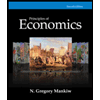Shift the NCO curve to illustrate the effect of capital flight. Then, on the graph representing the market for loanable funds, shift the supply curve, the demand curve, or both curves to reflect the change caused by the shift in NCO. Note: You will not be graded on your final placement of the curves on the graph, but you will need to shift them correctly in order to answer the questions that follow. Determine the equilibrium interest rate after capital flight occurs, and enter it into the second row of the table. Then determine the level of NCO that occurs along the new NCO curve at the new equilibrium interest rate. Finally, show the effect of the change in NCO on the market for foreign exchange by shifting either the supply curve, the demand curve, or both. ? REAL EXCHANGE RATE (Dollars per peso) The Market for Foreign-Currency Exchange Supply QUANTITY OF PESOS Demand Demand Supply
Shift the NCO curve to illustrate the effect of capital flight. Then, on the graph representing the market for loanable funds, shift the supply curve, the demand curve, or both curves to reflect the change caused by the shift in NCO. Note: You will not be graded on your final placement of the curves on the graph, but you will need to shift them correctly in order to answer the questions that follow. Determine the equilibrium interest rate after capital flight occurs, and enter it into the second row of the table. Then determine the level of NCO that occurs along the new NCO curve at the new equilibrium interest rate. Finally, show the effect of the change in NCO on the market for foreign exchange by shifting either the supply curve, the demand curve, or both. ? REAL EXCHANGE RATE (Dollars per peso) The Market for Foreign-Currency Exchange Supply QUANTITY OF PESOS Demand Demand Supply
Chapter21: Financial Markets, Saving, And Investment
Section: Chapter Questions
Problem 9P
Related questions
Question

Transcribed Image Text:Shift the NCO curve to illustrate the effect of capital flight. Then, on the graph representing the market for loanable funds, shift the supply curve, the
demand curve, or both curves to reflect the change caused by the shift in NCO.
Note: You will not be graded on your final placement of the curves on the graph, but you will need to shift them correctly in order to answer the
questions that follow.
Determine the equilibrium interest rate after capital flight occurs, and enter it into the second row of the table. Then determine the level of NCO that
occurs along the new NCO curve at the new equilibrium interest rate.
Finally, show the effect of the change in NCO on the market for foreign exchange by shifting either the supply curve, the demand curve, or both.
REAL EXCHANGE RATE (Dollars per peso)
The Market for Foreign-Currency Exchange
Supply
QUANTITY OF PESOS
Effects of capital flight
Demand
Summarize the results of capital flight by completing the following table.
Demand
O
Supply
Real Interest Rate Real Exchange Rate Net Capital Outflow

Transcribed Image Text:The graphs below depict the loanable funds market and the relationship between real interest rates and the level of net capital outflow (NCO)
calculated in terms of the Mexican peso.
REAL INTEREST RATE (Percent)
8
8
10
3
1
The Market for Loanable Funds in Mexico
+
0 1 2 3 4
Supply
Demand
5 6
LOANABLE FUNDS (Billions of pesos)
Initial state
After capital flight
7 8
(?)
REAL INTEREST RATE (Percent)
Complete the first row of the table to reflect the state of the markets in Mexico.
Real Interest Rate Net Capital Outflow (NCO)
(Percent)
(Billions of pesos)
Mexican Net Capital Outflow
8
7
6
10
5
4
3
2
NÇO
+
#
-3 -2 -1 0 1 2 3 4 5
NET CAPITAL OUTFLOW (Billions of pesos)
6
(?)
Suppose now that a sudden bout of political turmoil in Mexico causes world financial markets to become uneasy. Because investors now see Mexico as
unstable, they decide to pull a portion of their assets out of Mexico and put them into more stable economies. This unexpected shock to the demand
for assets in Mexico is known as capital flight.
Expert Solution
This question has been solved!
Explore an expertly crafted, step-by-step solution for a thorough understanding of key concepts.
This is a popular solution!
Trending now
This is a popular solution!
Step by step
Solved in 3 steps with 2 images

Follow-up Questions
Read through expert solutions to related follow-up questions below.
Follow-up Question
Summarize the results of capital flight by completing the following table.
|
|
Real Interest Rate
|
Real Exchange Rate
|
Net Capital Outflow
|
|---|---|---|---|
| Effects of capital flight |
Solution
Knowledge Booster
Learn more about
Need a deep-dive on the concept behind this application? Look no further. Learn more about this topic, economics and related others by exploring similar questions and additional content below.Recommended textbooks for you

Exploring Economics
Economics
ISBN:
9781544336329
Author:
Robert L. Sexton
Publisher:
SAGE Publications, Inc

Principles of Economics, 7th Edition (MindTap Cou…
Economics
ISBN:
9781285165875
Author:
N. Gregory Mankiw
Publisher:
Cengage Learning

Essentials of Economics (MindTap Course List)
Economics
ISBN:
9781337091992
Author:
N. Gregory Mankiw
Publisher:
Cengage Learning

Exploring Economics
Economics
ISBN:
9781544336329
Author:
Robert L. Sexton
Publisher:
SAGE Publications, Inc

Principles of Economics, 7th Edition (MindTap Cou…
Economics
ISBN:
9781285165875
Author:
N. Gregory Mankiw
Publisher:
Cengage Learning

Essentials of Economics (MindTap Course List)
Economics
ISBN:
9781337091992
Author:
N. Gregory Mankiw
Publisher:
Cengage Learning

Brief Principles of Macroeconomics (MindTap Cours…
Economics
ISBN:
9781337091985
Author:
N. Gregory Mankiw
Publisher:
Cengage Learning

Economics: Private and Public Choice (MindTap Cou…
Economics
ISBN:
9781305506725
Author:
James D. Gwartney, Richard L. Stroup, Russell S. Sobel, David A. Macpherson
Publisher:
Cengage Learning

Microeconomics: Private and Public Choice (MindTa…
Economics
ISBN:
9781305506893
Author:
James D. Gwartney, Richard L. Stroup, Russell S. Sobel, David A. Macpherson
Publisher:
Cengage Learning